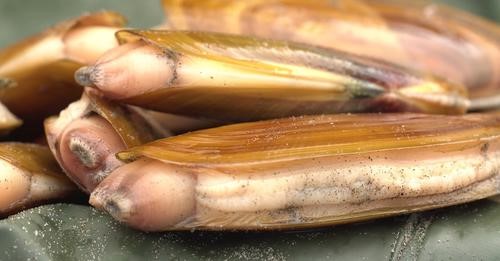(Monday, September 27, 2021, Astoria, Ore) – Following the annual conservation closure, Clatsop beaches reopen to razor clamming October 1 with good news: domoic acid levels are below the closure threshold and razor clam abundance is the highest seen since 2004 when ODFW began assessing the population.
Extremely high juvenile recruitment and good survival rates of both juvenile and mature clams over the 2020-21 winter should lead to a very promising season. This year’s population has a large number of mature clams that average over four inches with a tremendous number of juvenile clams under three-and-a-half inches.
To increase the chance of only digging mature, larger clams, harvesters should be sure to dig the largest razor clam “shows.” Clammers are reminded the daily harvest limit is the first 15 razor clams dug regardless of size or condition. Each clammer must have their own container, dig their own clams, and may only possess one daily limit. View ODFW’s video on razor clamming basics.
The most popular razor clamming area in Oregon, Clatsop beaches stretch 18 miles between the Columbia River south jetty and Tillamook Head. These beaches closed Oct. 30, 2020 due to high levels of domoic acid that remained elevated until recently.
Each year since 1967, ODFW closes Clatsop beaches to razor clam harvest July 15 – Sept. 30. This conservation measure prevents disturbance of the young clams, increases chances of good survival rates, and helps ensure future harvest. During the closure, ODFW shellfish biologists conduct stock assessment surveys to determine population health and status. Learn more about the conservation closure on ODFW‘s video.
Other good opportunities to harvest razor clams include Agate Beach, North Jetty, and South Beach in the Newport area along with Cannon Beach, Cape Meares, and Yachats Beach.
Clammers should always checked for toxin-related closures before harvesting clams or crabs by calling the shellfish safety hotline 1-800-448-2474 or visit ODA’s Recreation Shellfish page. Closures are also noted on ODFW’s Recreation Report – Clamming and Crabbing Report.
More information on Oregon coast clamming can be found on ODFW’s Crabbing and Clamming page.


